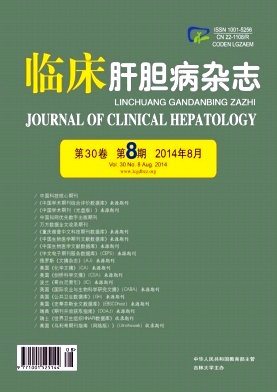Objective To observe the therapeutic effect of terlipressin combined with albumin in management of patients with hepatorenal syndrome.Methods A retrospective study enrolling 46 patients with hepatorenal syndrome from May 2011 to August 2013 was conducted, in which 22 patients were allocated to control group, and 24 patients to treatment group.In addition to conventional treatment, albumin was used in control group, and the patients in treatment group were treated with terlipressin plus albumin.Clinical symptoms, urine volume, serum creatinine, urea nitrogen, ascites, and prognosis were observed in the study.The Student's t test was used for comparison between the two groups, and the chi- square test was used for comparison of rates.Results The treatment group showed significant improvements in clinical symptoms, while the control group did not.In treatment group, urine volume (ml /24 h) increased from (758.5 ± 284.9) to (2277.1 ±704.8) (P<0.01) ;serum creatinine level (μmol/L) dropped from (234.2 ±87.2) to (126.8 ±62.2) (P <0.01) ;urea nitrogen level (mmol /L) dropped from (18.1 ± 6.4) to (10.3 ± 4.5) (P < 0.01) ;body weight (kg) dropped from (68.1 ± 3.9) to (64.6± 3.9) (P < 0.01) ;abdominal circumference (cm) dropped from (95.0 ± 5.1) to (90.8 ± 4.9) (P < 0.01) .However, the control group showed no significant changes in urine volume, serum creatinine, urea nitrogen, body weight, and abdominal circumference after treatment (P >0.05) .There were significant differences in these indices between the two groups after treatment (P < 0.05) .Significant differences in remission rate and survival rate were observed between the control group and treatment group (P < 0.05) .Conclusion A combination of terlipressin and albumin has favorable therapeutic effect on hepatorenal syndrome and improves the prognosis of patients with hepatorenal syndrome.













 DownLoad:
DownLoad: